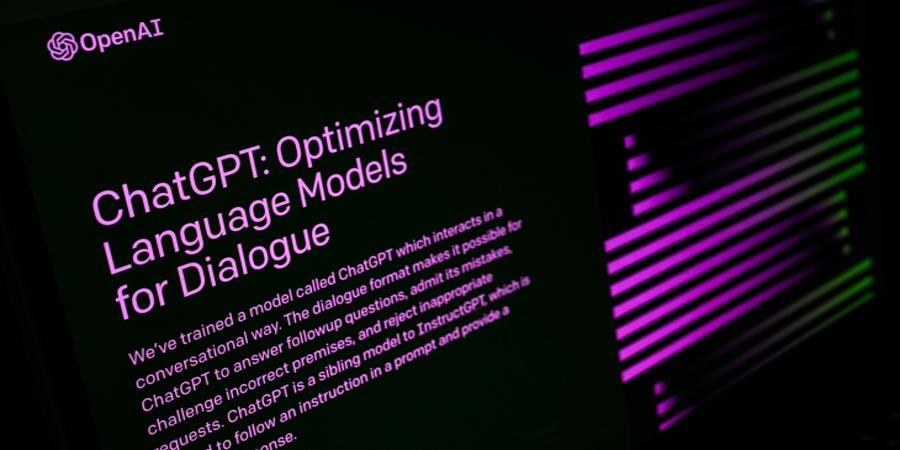ChatGPT, OpenAI’s text-generating AI system, has taken the world by storm. It’s able to write essays, code and more given short text prompts, hyper-charging productivity. But it also has a more…nefarious side.
In any case, the tech’s not going away — and indeed has expanded dramatically since its launch just a few months ago. Major brands are experimenting with it, using the AI to generate ad and marketing copy, for example.
And OpenAI is heavily investing in it. ChatGPT was recently super-charged by GPT-4, the latest language-writing model from OpenAI’s labs. Paying ChatGPT users have access to GPT-4, which can write more naturally and fluently than the model that previously powered ChatGPT.
Here’s a timeline of ChatGPT product updates and releases, starting with the latest, to be updated regularly. We also answer the most common FAQs (see below).
OpenAI launched plugins for ChatGPT, extending the bots functionality by granting it access to third-party knowledge soruces and databases, including the web. Available in alpha to ChatGPT users and developers on the waitlist, OpenAI says that it’ll initially prioritize a small number of developers and subscribers to its premium ChatGPT Plus plan before rolling out larger-scale and API access.
GPT-4 is a powerful image- and text-understanding AI model from OpenAI. Released March 14, GPT-4 is available for paying ChatGPT Plus users and through a public API. Developers can sign up on a waitlist to access the API.
ChatGPT is generally available through the Azure OpenAI Service, Microsoft’s fully managed, corporate-focused offering. Customers, who must already be “Microsoft managed customers and partners,” can apply here for special access.
OpenAI makes another move toward monetization by launching a paid API for ChatGPT. Instacart, Snap (Snapchat’s parent company) and Quizlet are among its initial customers.
At a press event in Redmond, Washington, Microsoft announced its long-rumored integration of OpenAI’s GPT-4 model into Bing, providing a ChatGPT-like experience within the search engine. The announcement spurred a 10x increase in new downloads for Bing globally, indicating a sizable consumer demand for new AI experiences.
Other companies beyond Microsoft joined in on the AI craze by implementing ChatGPT, including OkCupid, Kaito, Snapchat and Discord — putting the pressure on Big Tech’s AI initiatives, like Google.
After ChatGPT took the internet by storm, OpenAI launched a new pilot subscription plan for ChatGPT called ChatGPT Plus, aiming to monetize the technology starting at $20 per month.
A week after ChatGPT was released into the wild, two developers — Steven Tey and Dom Eccleston — made a Chrome extension called ShareGPT to make it easier to capture and share the AI’s answers with the world.
GPT-3.5 broke cover with ChatGPT, a fine-tuned version of GPT-3.5 that’s essentially a general-purpose chatbot. ChatGPT can engage with a range of topics, including programming, TV scripts and scientific concepts.
Writers everywhere rolled their eyes at the new technology, much like artists did with OpenAI’s DALL-E model, but the latest chat-style iteration seemingly broadened its appeal and audience.
ChatGPT is a general-purpose chatbot that uses AI to generate text after a user enters a prompt.
November 30, 2022 is when ChatGPT was released for public use.
There is a free version of ChatGPT that only requires a sign-in in addition to the paid version, ChatGPT Plus.
Anyone can use ChatGPT! More and more tech companies and search engines are utilizing the chatbot to automate text or quickly answer user questions/concerns.
Yes.
There is not an app available for iPhone or Android, but users have options to enable the chatbot on their mobile devices via their browser or a third-party app that uses ChatGPT’s public API.
It’s not documented anywhere that ChatGPT has a character limit. However, users have noted that there are some character limitations after around 500 words.
Yes, it was released March 1, 2023.
Everyday examples include programing, scripts, email replies, listicles, blog ideas, summarization, etc.
Advanced use examples include debugging code, programming languages, scientific concepts, complex problem solving, etc.
It depends on the nature of the program. While ChatGPT can write workable Python code, it can’t necessarily program an entire app’s worth of code. That’s because ChatGPT lacks context awareness — in other words, the generated code isn’t always appropriate for the specific context in which it’s being used.
Yes. OpenAI allows users to save chats in the ChatGPT interface, stored in the sidebar of the screen. There are no built-in sharing features yet.
Yes. There are multiple AI-powered chatbot competitors such as Together, Google’s Bard and Anthropic’s Claude, and developers are creating open source alternatives. But the latter are harder — if not impossible — to run today.
CNET found itself in the midst of controversy after Futurism reported the publication was publishing articles under a mysterious byline completely generated by AI. The private equity company that owns CNET, Red Ventures, was accused of using ChatGPT for SEO farming, even if the information was incorrect.
Several major school systems and colleges, including New York City Public Schools, have banned ChatGPT from their networks and devices. They claim that the AI impedes the learning process by promoting plagiarism and misinformation, a claim that not every educator agrees with.
Several marketplaces host and provide ChatGPT prompts, either for free or for a nominal fee. One is PromptBase. Another is ChatX. More launch every day.
Poorly. Several tools claim to detect ChatGPT-generated text, but in our tests, they’re inconsistent at best.
No. But OpenAI recently disclosed a bug, since fixed, that exposed the titles of some users’ conversations to other people on the service.
The user who requested the input from ChatGPT is the copyright owner.
None specifically targeting ChatGPT. But OpenAI is involved in at least one lawsuit that has implications for AI systems trained on publicly available data, which would touch on ChatGPT.
Yes. Text-generating AI models like ChatGPT have a tendency to regurgitate content from their training data.
Source @TechCrunch



